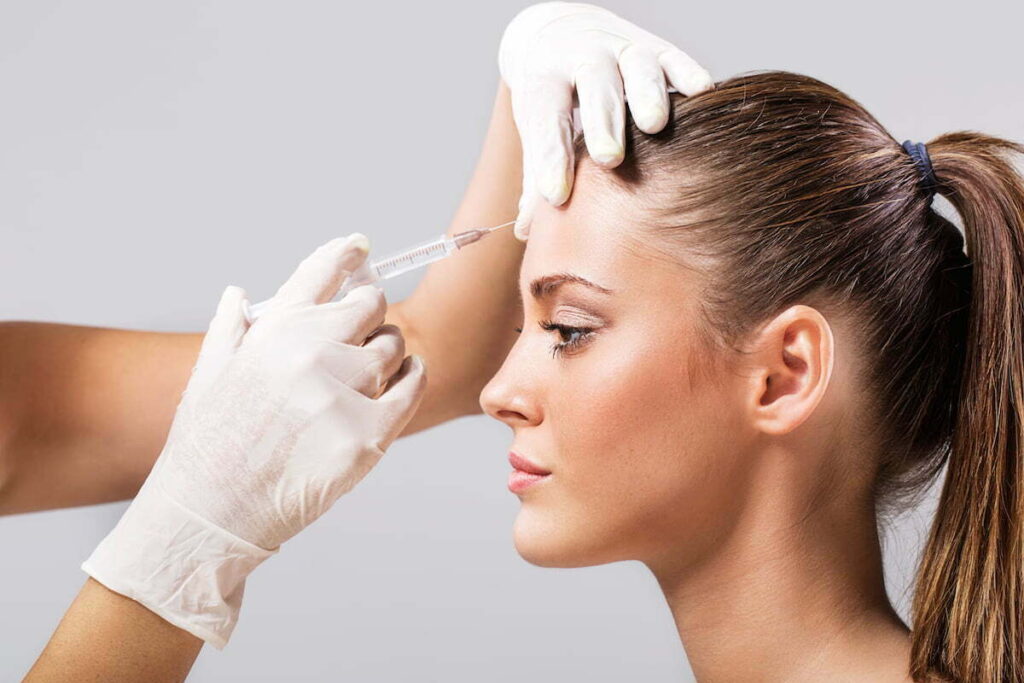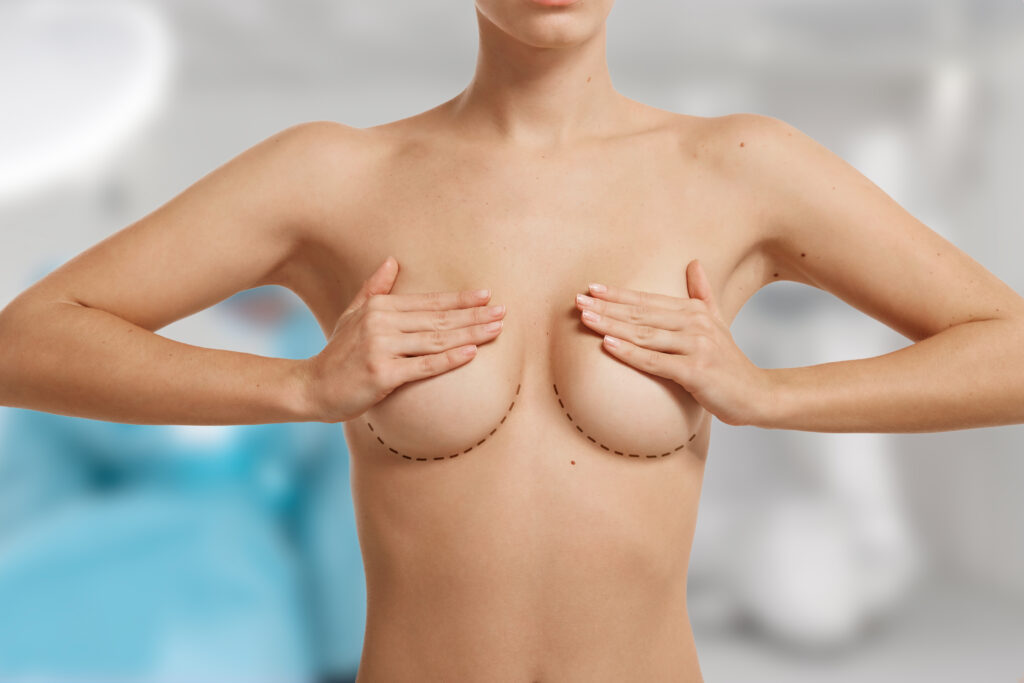You probably heard about botox aka botulinum toxin injections. This procedure is among the most widespread way to remove wrinkles and look younger. However, despite its popularity, there is yet a lot of misunderstanding of the procedure.
Moreover, before deciding on whether the botox is right for you, you need to clearly understand the possibilities and limitations of the treatment. Realistic expectations are the best way to get sufficient results.
We created this article in collaboration with Dr. Tatiana Kobets. She is a dermatologist with 20 years of experience and the owner of the cosmetological center “KeyMed”. Dr. Kobets has been treating people with botulinum toxin for the last 18 years.
What is botox on the face?
Botox is a neurotoxin produced by the bacteria Clostridium botulinum. During the procedure, a small amount of the toxin is injected into the face’s surface muscles.
In the normal state, the brain sends neural signals to muscles to contract or relax them. After injection, botulinum toxin blocks signal transmission, so muscles stop contracting.
Excessive muscle activity injures the skin all the time resulting in wrinkles formation. After muscles get relaxed the skin smooths out within 10-14 days.
Botulinum toxin injections can work with both dynamic and static wrinkles. Dynamic lines are formed in the moment of facial expression but smooth out during relaxation. Static wrinkles are formed due to the loss of skin elasticity and loss of collagen.
Botox can treat them only at the first stage of the formation, however, after they get too deep it is better to combine treatment with fillers.
Botox areas on the face: before and after
Forehead
It is the most common area for botulinum toxin injection as this area is very easy to treat. It is also the first zone where the first wrinkles may appear, so this area is a starting point in the treatment. Horizontal lines along the forehead are formed because of high forehead involvement in the expression of different emotions like surprise or interest.

Between eyebrows or elevens
Injections in this area correct angry and tired appearance. There are some experiments that blockage of muscle activity in this zone can improve mood.
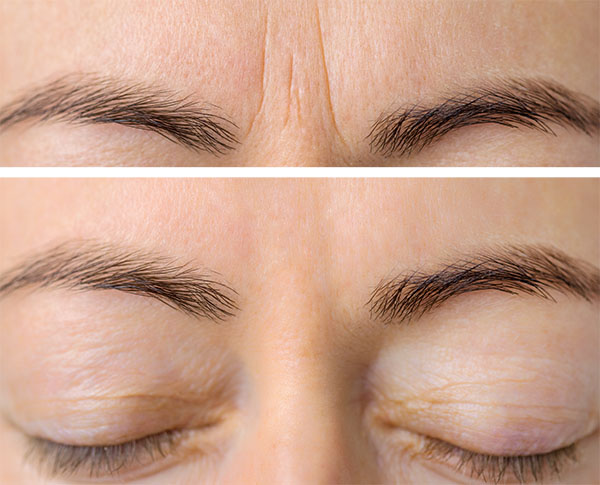
Eyebrows lifting
Injection into the upper eyebrow can lift the eyebrow. However, this procedure is not suitable for all people and the results mostly depend on the muscle structure in that zone.
Crow’s feet
Crow’s feet is a name for small wrinkles at the counter of the eye. The skin in this area is thin and has many nuances to consider to avoid dropped or swollen eyelids.
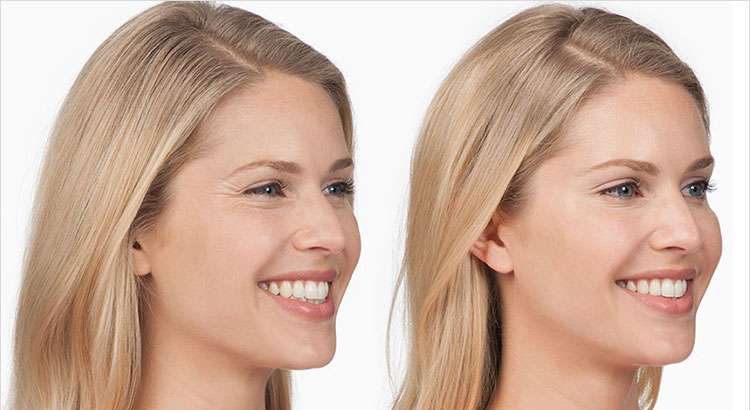
Bunny lines
These are lines that go down the nose when you are smiling or laughing. With aging, they get more prominent. Some people are more likely to get these lines because they use a lot of responsible muscles in facial expressions.
Dimpled chin
Another name is the pickled chin. Due to the loss of collagen and muscle overreaction when aging these dimples get more visible.
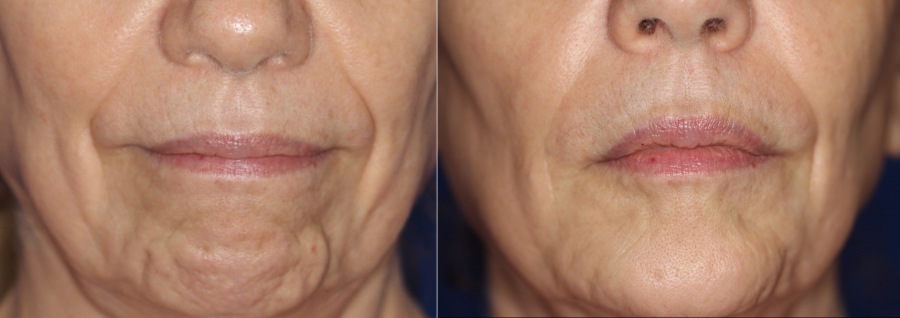
Smile lines or marionette lines
They go from the corner of the month to the jaw. While botox injections can help to reduce the appearance of lines, fillers are also options in this area. Fillers are used for restoring lost tissue volume there to smooth out the skin from the inside.

Smoker’s lines
Despite the name, these wrinkles are caused not only by smoking. Sun exposure, aging, and chapped lips contribute to their formation. Botulinum toxin can significantly smooth out lips’ appearance.
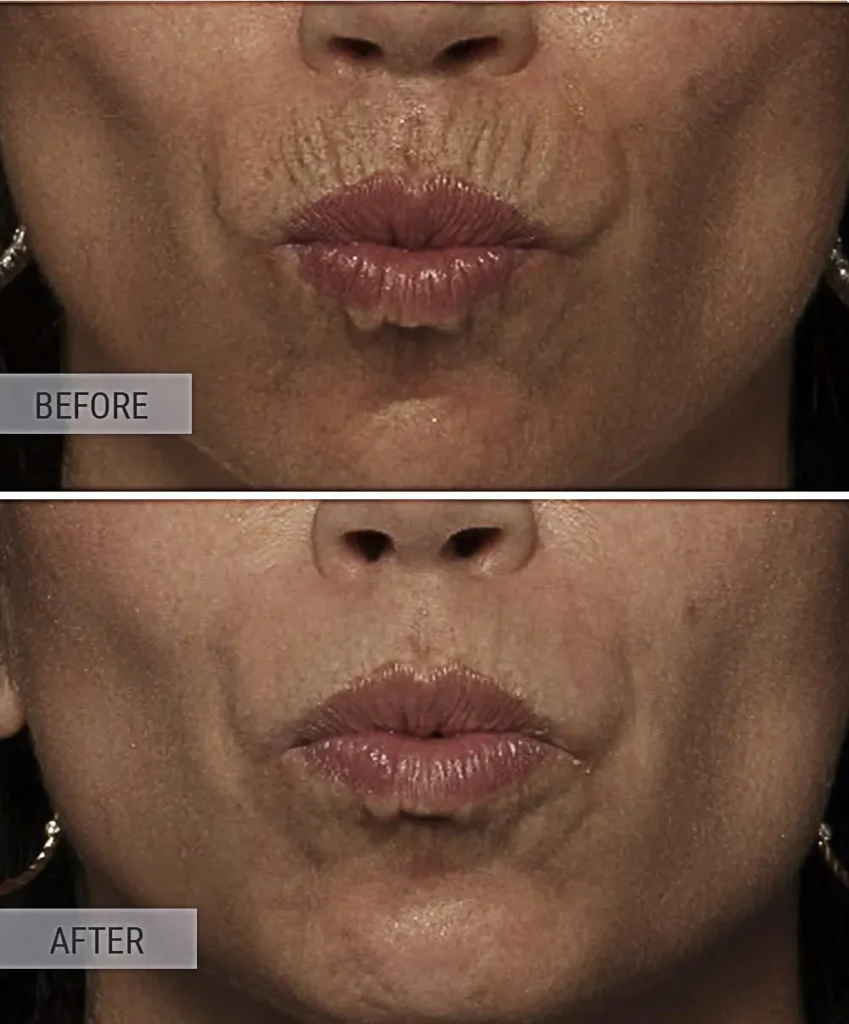
Neck bands
Horizontal and vertical lines appear on the neck with aging. Botox prevents muscles from sagging and formation of these unattractive wrinkles.
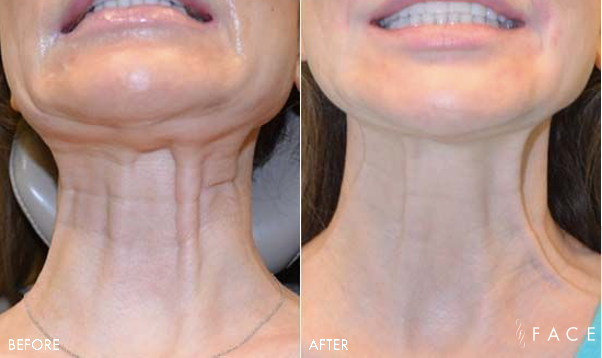
What is the best age to start Botox?
Age mostly depends on individual features. Some people get wrinkles on the forehead in the early 20s while others can live without any signs of aging until their 30s. On average, the starting age ranges from the mid-20s to the early 30s.
As a medication procedure, botox on the face has an indication. That is the presence of lines on the face in a relaxed state.
The interesting fact is that there is no need to make a preventive procedure before you have an indication for the procedure. However, as soon as you notice wrinkles, this is the sign that it is time to consult with a dermatologist.
You also need to understand that botox cannot deal with deep wrinkles. In this case, the specialist will perform the additional treatment to smooth out the skin and then use a botox injection to fix the result for a longer time.
5 things to consider before facial botox

#1. Selecting a professional specialist
First of all, ask to check whether the specialist has a complete high medical education. The list of specialists who are allowed to make botox injections is different depending on the country. Still, it is better to get injections from a doctor who works with facial anatomy and structure like a dermatologist, plastic surgeon, or dentist.
The second criterion is to check the presence of certificates for completed courses on botulinum toxin injections. It should be from the manufacturer of the medication used for the procedure. Every botulinum toxin brand has specific features in the working process, like storage, dilution rate, diffusion in the skin, etc. It is impossible to complete courses only for Botox and then work with another medication. So be very attentive.
Another factor you need to consider is the medical license of the place of the procedure. It is a bad idea to go to somebody’s house or private cabinet without a license and get the procedure there.
The last piece of advice is to check the reviews on the Internet. There are many resources where you can find reviews from the real client about the clinic or particular specialist. Do your own research before signing up.
Don’t hesitate to ask for any proof of proficiency you need, because this is your safety and you pay money for the procedure.
#2. Advice before the procedure
The only restriction you should follow is regarding alcohol. You should avoid it for 24-48 hours before the procedure. It will ensure good healing and recovery.
There are also a couple of other recommendations.
Before coming to the procedure, appoint a consultation with a specialist. You need to plan beforehand all zone for treatment and treat them in one session. As toxin stimulates the immune system, frequent injections cause resistance to the botulinum toxin, so the further procedure works worse.
Another benefit of the previous consultation is the development of the treatment plan. With aging the structure of the face becomes different, so you might require other procedures to look younger and fresher.
#3. Restrictions after the procedure
Botulinum toxin injections have a limited list of restrictions. We can divide them into the periods:
| 24-48 hours | – Ban alcohol consumption – Avoid intensive cardio exercise a week |
| A week | – Don’t plan any heat procedures like a sauna or sunbathing |
| Until the effect wears off | – Don’t apply any intensive esthetic procedures to the treatment that stimulates blood flow or muscle contraction. For example, lifting, and microcurrents. |
#4. Side effects

Botox injections are safe as long as performed by an experienced doctor. Most side effects disappear in 2 weeks after the procedure. In most cases, they are limited to:
- Bruising, pain, and swollen sites of injections
- Mild headache or flu-like symptoms
- Swollen eyelids
Mild side effects include dropped eyelids or eyebrows. The wrong admission of the medication is the reason for these side effects. If a specialist uses too much medication or places it too low than needed, it results in an unexpected drop.
Usually, it takes more than a month before the situation starts to improve. However, it is possible to speed up this process.
Treatments that stimulate muscle activity and blood flow in the treated site act like an antidote for botulinum toxin. For example lifting, bio revitalization, and microcurrent are all effective against ptosis. At-home devices are also helpful, you need to use them daily to see improvements in 2-3 weeks.
People are also afraid of getting frozen faces. If this is your first time with botulinum toxin injection, we recommend starting with a decent dose. It is hard to predict the reaction to the medication, but it is easier to add medication after time than treat a “mask” face.
#5. Frequency of treatments
The average time between the procedures is 3 and 6 months. It depends on the individual muscle activity, the applied dose, and the used medication.
It is also useful to make short breaks after the effect wears off. Up to 3 months after the botox effect disappears muscle cannot work at 100%. It prevents wrinkles formation too.
Moreover, you can use this time slot to perform other procedures on the face that gives an anti-aging effect like lifting or biorevitalization.
The last benefit of the additional break between procedures is that it helps the body to rest from the toxin a little. So the result of the next injection will last longer than previously.
Who should not get botox on the face?
Botulinum toxin injections have the following contraindications:
- Keloidal scarring
- Neuromuscular disorders
- Botulinum toxin allergies
- Body dysmorphic disorder
- Pregnancy
- Breastfeeding
- Amyotrophic lateralizing sclerosis myopathies
Also, patients over 70 years should consider botulinum toxin injection with caution because of excess muscle atrophy on the face.
Allergy to botox is also a contraindication. However, it is an extremely rare condition.
Summary
Botox on the face is a widespread procedure that can smooth out dynamic and non-deep static wrinkles as it blocks muscle activity.
You are can get botox injections if you have lines along the forehead, crow’s lines, “elevens”, bunny lines, dimpled chin, marionette lines, smoker lines, and neck bands.
You should pay extra attention to selecting an experienced specialist for the procedure. With a good professional you will create a treatment plan, consult about before and after care tips, and avoid many side effects like ptosis or asymmetry.
FAQ
😢 What is it like to get botox injections?
It is a little uncomfortable to get botulinum toxin injections. For the vast majority, it feels like mosquito bites and doesn’t require any anesthetic cream. The procedure takes up to 15 minutes depending on the zone. Usually, you will get up to 20 injections into one site.
📅 What age is perfect for Botox for women?
The age between mid-20s and early-30s is best. After you start seeing the first signs of static wrinkles then it is better to book a consultation.
❌ Is there a downside to Botox on the face?
The main drawback of the botulinum toxin is that it gives temporary results. Another disadvantage is that many things depend on the qualification and experience of the specialist so it might be hard to find a good doctor. The last one is that moderate side effects like asymmetry or ptosis are hard to remove.
↩️ Can Botox on the face be reversed?
The is no immediate solution that can reverse the results of the botox. Still, there is no need to wait for 6 months until the result wears off. You can stimulate blood flow and muscle activity with massage, microcurrents, lifting, and other procedures to return to the normal state in 2-3 weeks.

